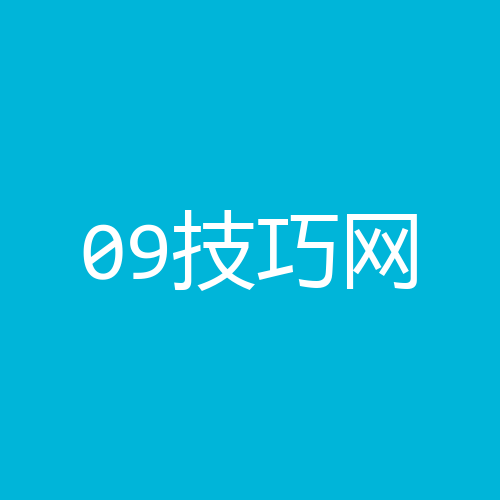印度新的贫穷定义遭到抨击
In India, norms set by the country’s main planning body to calculate poverty have been slammed by critics who fear they will exclude vast numbers of the needy from social welfare programs. About one third of India’s 1.2 billion population is poor, according to official estimates.
在印度,政府主要的计划部门为贫穷线所设定的标准遭到批评人士的抨击,他们担心,这会使众多民众无法获得他们需要的社会福利项目。官方估计,印度12亿人口中有大约三分之一的人生活贫困。
Hari Singh earns about $150 a month working as a security guard in the business hub of Gurgaon near Delhi. After paying $40 to rent a small room in a slum, the 45-year-old can barely manage to buy enough food for the house.
哈里辛格每个月赚大约150美元,他在德里附近的商业中心戈加恩当警卫。他在一个贫民区租了一个小房间,付了40美元的房租后,这位45岁的男子只能勉强为全家人张罗到够吃的食物。
Singh says fruit and milk are out of his reach. He estimates he needs double his income to cover basic expenses on housing, health care and schooling for his son.
辛格说,他买不起水果和牛奶。他估计,他需要两倍收入才能支付住房,医疗保健和儿子上学等基本开销。
But Hari Singh will not be counted among India’s poor, according to new criteria proposed by the planning commission to determine the poverty line.
但是,根据计划委员会提出的新贫穷线标准,辛格不会被列为印度的穷人。
The planning commission has told India’s supreme court that a person who spends roughly half a dollar a day on food, education and health in rural areas, or $15 a month, will not be considered poor. The bar for the poverty line for urban areas is slightly higher - 66 cents or about $20 a month. The figures are far below the World Bank’s international poverty standard of $1.25 per day.
计划委员会对印度最高法院说,一名在乡村地区的人每天花费大约零点5美元用在食物,教育和医疗上,也就是相当于每个月15美元,就不被认为是穷人。城市地区的贫穷线则稍微高一些,为每天66美分,大约每个月20美元。这个数字远远低于世界银行的1点25美元国际贫穷标准。
The planning commission, which guides economic policy, formulated the norms after the country’s top court asked it to explain the basis for its poverty numbers.
指导经济政策的计划委员会是在印度的最高法院要求解释其贫穷线的基础之后,定出这些标准的。
The new criteria follow a contentious debate, in recent years, on how to identify India’s poor. After being determined for decades by a person’s calorie intake, it has now moved to income.
新标准出台前,印度近年来对如何认定贫穷出现了激烈辩论。几十年来都是以个人的热量摄取来决定,现在则改为以收入为决定标准。
But activists and many economists have slammed the new norms for being unrealistic. They say that in a city such as New Delhi, 66 cents would buy a person no more than an onion, a potato, some rice, a banana, a pencil, an aspirin and a bus ticket.
但是活动人士和很多经济学者抨击新的标准脱离现实。他们认为,在类似新德里这样的城市,66美分只能够让一个人买到一个洋葱,一个土豆,少许米,一根香蕉,一支铅笔,一粒阿斯灵,和一张大巴车票。
"It’s been understood for some time that this poverty basket is very restrictive. But what is new and I think completely startling is the claim that this poverty line actually ensures adequate expenditure on food, health and education. That really cannot be justified from a common sense point of view… This is more like a starvation line than a poverty line," said Jean Dreze, a prominent development economist involved in India’s economic policy making.
德莱兹是著名的发展经济学家,他参与了印度经济政策的制定。他说:“一段时间以来我们了解到,政府对贫穷线的计算有很多限制,但是新标准和过去不同的地方,也是让我触目惊心的地方在于,新的贫穷线声称确保人们在食物,医疗和教育方面有足够的开支。从常识的观点来看这完全不能自圆其说,新的标准更像是饥荒线,而不是贫穷线。”
The planning commission says it has to set the poverty line to target those who are most in need. Officials stress that the government must make the best use of limited funds it has to spend on social welfare programs and they cannot cast the net too wide.
计划委员会指出,该委员会必须设定贫穷线来针对最需要帮助的人。官员们强调说,政府必须善用有限的经费在社会福利项目上,他们不能把项目的范围订得太广泛。
Despite India’s spectacular economic growth, millions of people are still poor. The Congress-led government has ambitious plans to cut poverty by spending billions of dollars on employment, health care and education programs. It proposes to pass a law to give cheap food grains to the poor. It wants to replace subsidized fuel and fertilizer with cash transfers.尽管印度有傲人的经济增长,数以百万计的印度人仍然穷困。国会领导的政府制定了雄心勃勃的计划,通过花费几十亿美元在就业,医疗保健和教育项目上来减少贫困人口。政府提议通过一项法律给予穷人廉价粮食谷类。政府还希望用现金转帐来取代补贴汽油和肥料。
But activists argue that the government is trying to reduce its welfare burden by reducing the number of those who will qualify for state benefits. Among the critics is Biraj Patnaik, adviser to an official commission on the right to food.
但是活动人士认为,政府试图通过降低符合接受邦福利的人数,来减少其福利负担。批评人士之一派特奈克(Biraj Patnaik)是一个有关食物权利的官方委员会顾问。
"What they want to do is to exclude 70 percent of the people of this country from any benefit that anti-poverty programs are giving, and this will then subsequently lead to a decline in subsidies… But this is eliminating the poor by deceit, by default and not by improving their lives," said Patnaik.
派特奈克说:“他们想要把印度70%的民众排除在任何福利之外,这些福利是反贫穷项目所提供的。这种做法接着就会导致补贴下降。但这是用欺骗,用不履行义务,不改善人们生活的方式来消除贫穷。”
About 32 percent of India’s 1.2 billion people, or roughly 400 million people, live in poverty, according to official estimates.
据官方估计,印度12亿人口中有大约32%,也就是将近4亿人生活贫困。
But several economists argue that these figures do not accurately reflect the extent of deprivation in a country where nearly half the children under five are malnourished.
但是,一些经济学家认为,这些数字并没有确实反映出这样一个国家被剥夺的程度,印度将近一半的5岁以下儿童营养不良。
A government appointed watchdog, the National Advisory Council, has been arguing that social support should now be extended to all citizens because the country can afford it.
政府指派的监督单位国家咨询委员会一直认为,社会支持项目现在应该扩大到所有公民,因为印度政府负担得起。
Economist Dreze, who was a member of the council, supports this. He says some states in the country, like Tamil Nadu in the south and Himachal Pradesh in the north, are showing the way.
经济学家德莱兹是国家咨询委员会的成员,他支持这个看法。他说,印度的一些邦,例如南部的泰米尔纳德邦,以及北部的喜马偕尔邦,正在出现这种方式。
“We can have comprehensive social security systems and many states in India are actually moving in that direction, expanding the public distribution system and I think the experience of that is reasonably positive that when more people are involved in the system, it works much better. A lot of people have a stake in it. When you have social services restricted to this minority of extremely poor households, it does not work very well, nobody cares," said Dreze.
德莱兹说:“我们可以有全面的社会安全体系,印度很多邦确实正朝这个方向发展,扩大公众分配体系。我认为,这种经验是合理正面的,显示了有更多人参与这种制度,其效果就更好。这种制度攸关很多人的利益。当社会服务不提供给极贫困家庭的少数人口时,这个制度的效果不会好,也没有人会在乎。”
Among those who agree with the proposal to expand benefits is security guard Hari Singh.
同意扩大福利提案的人之一是警卫哈里辛格。
He says, however the official norms define poverty, he counts himself among the country’s poor and would appreciate a helping hand from the government.
辛格说,不论官方订出的贫穷标准如何,他认为自己是印度的穷人,他会感激政府提供的帮助。
印度贫穷 印度贫穷的原因 印度穷 印度多穷 印度为什么那么穷 印度到底穷不穷 印度贫穷落后的原因 印度现在很穷吗 印度穷到什么程度版权声明
本文来自投稿,不代表本站立场,转载请注明出处。
